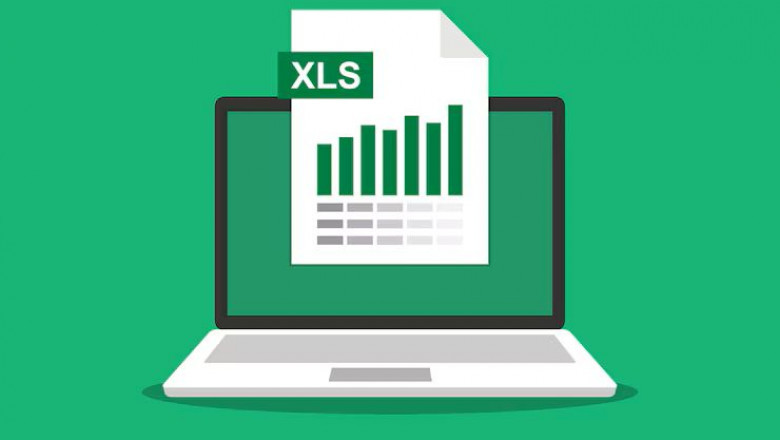views
Understanding the Excel to CSV Conversion Process and Its Key Advantages
"Data is a tool for decision-making, but only when it's accessible and usable."
When it comes to working with data, one crucial process that often gets overlooked is converting Excel to CSV. This simple yet powerful transformation offers a wide range of benefits. Excel files, with their complex formulas, formatting, and multiple sheets, can sometimes be challenging to share or transfer between different programs. On the other hand, CSV (Comma-Separated Values) files are plain text, making them incredibly easy to handle, share, and work with. In this blog, we’ll dive into the Excel to CSV conversion process and explain why it's a game changer for managing your data.
The Basics of Excel and CSV Files
First, let’s understand the two file types. Excel files are popular for organizing, analyzing, and visualizing data. They can store various types of content, from numbers and text to images and charts. However, Excel files are specific to Microsoft Excel, meaning other applications might not support all the formatting or formulas.
On the other hand, CSV files are simple text files that store data separated by commas. Unlike Excel files, they don't support advanced formatting or formulas. But this simplicity makes them highly versatile. Most programs that handle data, such as databases or analytics software, support CSV files. Excel to CSV conversion allows you to easily move data from one software to another without worrying about compatibility issues.
Why Convert Excel to CSV?
There are many reasons why converting Excel to CSV is beneficial. Below are the key advantages of this process.
1. Universal Compatibility
CSV files are widely accepted across different software. Almost any database or data processing application can read CSV files. This is not always true for Excel files, especially if they contain complex elements such as formulas, charts, or special formatting. By converting to CSV, you ensure that your data is ready for use on any platform without worrying about compatibility problems.
2. Simplified Data Sharing
If you need to share data with someone who doesn’t use Excel, CSV is a perfect solution. Since it's a plain text file, anyone can open it using simple text editors or import it into various programs. This makes it easier to share and collaborate on data without the need for specific software.
3. Faster Performance
Large Excel files, especially those with multiple sheets and complex formulas, can be slow to open and edit. By converting to CSV, you remove the extra formatting and content that can slow down performance. This leads to faster processing and easier handling of the data.
4. Reduced File Size
Excel files, due to their advanced features, can sometimes become very large, especially when they contain numerous rows and columns of data. CSV files, being plain text, tend to have much smaller file sizes. This is an advantage if you're working with large datasets and need to save space or transfer data quickly.
5. Cleaner Data for Analysis
When preparing data for analysis, it is essential to have it in a straightforward format. Excel often includes extra formatting and metadata that aren't necessary for analysis. Converting to CSV removes these extras, making the data cleaner and easier to analyze.
How to Convert Excel to CSV: A Simple Guide
Converting Excel to CSV is easy and can be done directly in Excel. Here’s how:
-
Open Your Excel File: Start by opening the Excel file you want to convert.
-
Click "Save As": Go to the "File" menu and select "Save As."
-
Select CSV Format: In the "Save as type" dropdown menu, choose CSV (Comma delimited) (*.csv).
-
Save the File: Choose the location where you want to save the CSV file and click "Save."
-
Confirm the Conversion: If your Excel file contains multiple sheets, Excel will ask you if you want to save only the active sheet. Since CSV files only support one sheet, you’ll need to make sure you’re saving the correct one.
After saving, you'll have a CSV file that can be opened in any text editor or imported into other software.
The Limitations of CSV Files
While Excel to CSV conversion offers many advantages, there are some limitations to consider. For instance, CSV files do not retain any of the formatting from the original Excel file. All fonts, colors, and other visual elements will be lost. Furthermore, CSV files do not support formulas or macros, so you’ll lose any complex calculations that were included in the Excel sheet.
Lasting Impressions
In the world of data management, knowing how to convert Excel to CSV can be incredibly useful. It ensures that your data is accessible across various platforms, easy to share, and ready for analysis. By converting Excel to CSV, you can simplify data sharing, reduce file sizes, and improve compatibility with other software. While it does come with a few limitations, such as the loss of formatting and formulas, the benefits often outweigh these drawbacks, making it a valuable process in many data-related tasks.
If you're handling data frequently, mastering Excel to CSV conversion is a skill that will save you time and effort. If you’re sharing data with others, preparing it for analysis, or looking to improve performance, converting Excel to CSV is a smart choice that simplifies your workflow.














Comments
0 comment